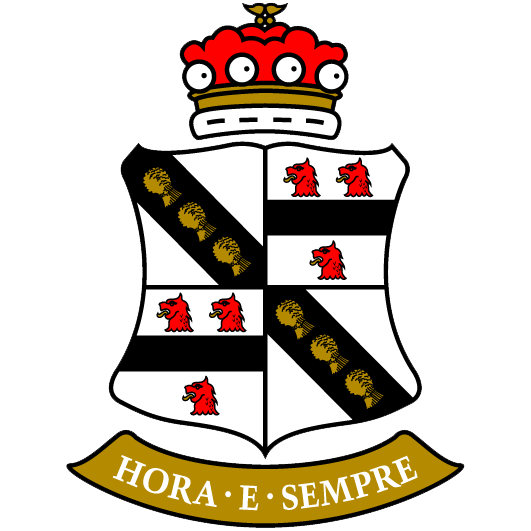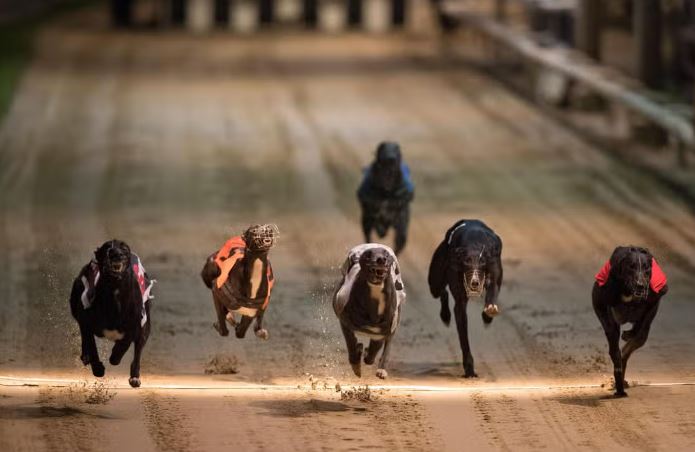Greyhound racing lines or running routes have a considerable impact on the performance of a greyhound during a race. By understanding these racing lines, one can better assess the strengths, weaknesses, and strategies of each racing dog. This article examines the benefits and drawbacks connected with different racing lines.
Understanding Racing Lines
Racing lines refer to the path a greyhound takes during the course of a race. These tracks can vary based on the dog’s natural inclination, training, and positioning determined by the race setup. The racing lines offer insights into the risks and rewards encountered by greyhounds during a race.
Greyhound Racing Styles and Track Positions
Greyhounds exhibit various racing styles based on their preferred running routes on the track. Each style offers certain advantages and disadvantages that can influence a dog’s performance. These racing styles include ‘railers’, ‘middle-trackers’, ‘wide runners’, and ‘very wide runners’.
Railers
Greyhounds racing on the inside track are known as ‘railers’ and run the shortest route around a circuit, granting them distinct advantages.
Advantages:
- Shortest Distance: ‘Railers’ cover the least ground, giving them a speed advantage over other racing styles.
- Avoiding Trouble: By running along the inside fence, ‘railers’ are often able to avoid collisions or crowding that may occur among dogs in other positions.
Disadvantages:
- Risk of Boxed-In Situations: ‘Railers’ can find themselves trapped behind a group of dogs, struggling to maintain their optimal speed around the bends due to the sharp turn of the inside line.
Middle-Trackers
‘Middle-trackers’ maintain a position between the ‘railers’ and the ‘wide runners’, allowing them to keep their speed consistent throughout the race.
Advantages:
- Consistent Speed: ‘Middle-trackers’ can maintain their maximum speeds throughout a race, as they are less vulnerable to sharp turns or crowding compared to ‘railers’.
Disadvantages:
- Vulnerability to Overtaking: With more space for other dogs to pass them, ‘middle-trackers’ are easier to overtake on both the inside and outside of the track, often losing the front position.
Wide Runners
Dogs that run on the outside of the track are known as ‘wide runners’. These greyhounds thrive in wet racing conditions and can avoid trouble with inside dogs.
Advantages:
- Avoiding Trouble: ‘Wide runners’ can circumvent collisions or crowding that involves the inside racers.
- Wet Conditions: In wet racing conditions, wide runners are favored, as they can better navigate the slick track.
Disadvantages:
- Additional Distance: ‘Wide runners’ cover more ground than ‘middle-trackers’ and ‘railers’, putting them at a distance disadvantage.
- Losing Ground on Bends: Since they run on the outside of the track, ‘wide runners’ typically lose ground while navigating turns.
Very Wide Runners
Some greyhounds naturally run on the far outer part of the track, known as ‘very wide runners’. Although they cover the most distance, they can avoid trouble by racing in this extreme position.
Advantages:
- Evading Crowding or Baulking: ‘Very wide runners’ can bypass interference caused by other dogs, as they are farthest from the race’s central action.
- Wet Conditions: In adverse weather, ‘very wide runners’ can maintain their performance due to their distance from the other dogs.
Disadvantages:
- Inferior Racing Line: ‘Very wide runners’ lose significant ground around the corners, as they run much farther than ‘inside’ and ‘middle-runners’.
- Longest Distance: By running farthest from the rail, ‘very wide runners’ cover the most ground, putting them at a significant disadvantage.
| Racing Style | Advantages | Disadvantages |
|---|---|---|
| Railers | – Shortest distance – Avoiding trouble | – Risk of boxed-in situations – Sharp turns |
| Middle-Trackers | – Consistent speed | – Vulnerability to overtaking |
| Wide Runners | – Avoiding trouble – Thrive in wet conditions | – Additional distance – Losing ground on bends |
| Very Wide Runners | – Evading crowding – Thrive in wet conditions | – Inferior racing line – Longest distance |
Hare Chasing Strategies and Regional Differences
In greyhound racing, the artificial hares employed play a significant strategic role, dictating the dogs’ running paths. The positions of these hares create variance in racing styles across different geographical locations, influencing whether the dogs run closer to the inside or on the wider expanses of the track.
Tracks with Inside Hare (America, Australia, and New Zealand)
In several regions, including America, Australia, and New Zealand, the artificial hare is placed on the inside of the track, driving greyhounds to choose running paths closer to the fence.
Hare Placement:
The lure (occasionally two lures) is suspended on an arm protruding from a central rotating axis, leading the greyhounds around the circuit. It is typically positioned to run one to two meters from the inside rail, varying based on specific track designs.
Effects on Running Style:
These hounds usually follow a more interior running trajectory as they chase the inside hare. This has the consequential effect of dogs running relatively closer to the fence.
Tracks with Outside Hare (United Kingdom and Ireland)
On the contrary, tracks in the United Kingdom and Ireland employ an outside hare system. This setup prompts dogs to run more centrally or extensively on the broader parts of the track.
Hare Placement:
The lure, commonly designed as a windsock, is driven along the ground, maneuvering around the outer perimeter of the track.
Effects on Running Style:
Greyhounds on these tracks are inclined towards middle to wide running paths due to the outside hare’s placement. The influence of this setup is notably evident as the greyhounds race out of turns and along the straights, with dogs taking more sweeping trajectories.




